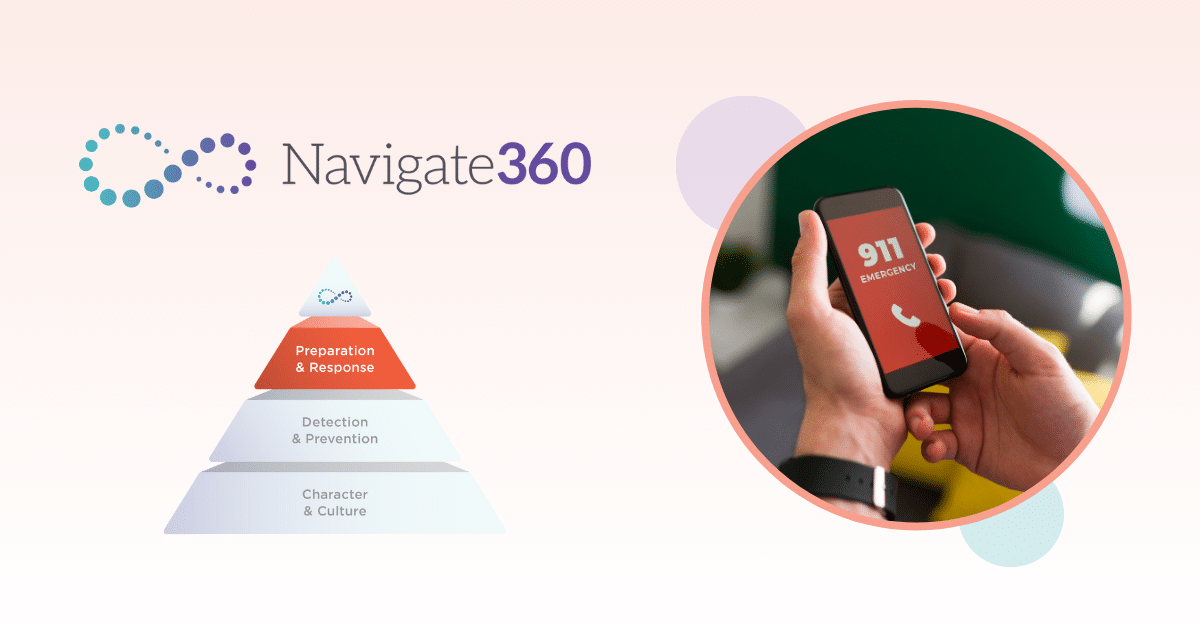Understanding An Incident Response Plan
When it comes to emergency planning, the “it won’t happen here” mentality is no longer an option for any organization. A core mission of any K-12 school is to create a safe and secure learning environment in which students and staff can thrive. The U.S. Department of Education recommends, and most states require, every school to have an emergency operations plan (EOP). An EOP is a comprehensive document outlining how a school will respond to various crises, ensuring the safety of students, staff, and visitors. An incident response plan (IRP) is an element of the EOP that focuses on managing specific incidents or emergencies. Let’s delve into the steps involved in creating an IRP and the key components of an effective IRP for schools.
Creating An Incident Response Plan
Learn the key steps involved in establishing an incident response plan, from assembling your emergency team to defining objectives and implementing the plan effectively.
- An Emergency Team: In an emergency, people are your most valuable asset. Designate and define roles for the members of the school’s emergency response team, including administrators, teachers, support staff, and external partners (e.g., law enforcement, medical personnel). Each person’s responsibilities should be clearly defined and outlined.
- Area Hazards Assessment: An “all-hazards plan” does not mean a plan for every hazard; just those likely to impact your school. Begin with a thorough assessment of potential risks and hazards that could impact the school. These include natural disasters (such as earthquakes, floods, and hurricanes), man-made incidents (including shootings, bomb threats, and chemical spills), and health-related emergencies (such as pandemics). Partnering with your local county or city office of emergency management can help to streamline this process. Regardless, it’s crucial to ensure that certified professionals, with expertise in assessing various aspects of school safety, undertake the risk assessment. During this assessment, these professionals will:
- Conduct a security audit to identify vulnerable or hazardous areas on school premises and within facilities.
- Compile and analyze crime and school incident data to pinpoint the times and specific locations where infractions most commonly occur.
- Identify and prioritize addressing areas of weakness based on the safety hazards that present the most immediate threats.
- Document the necessary corrective actions that need to be implemented.
- Establish a timeline for completing these corrective actions.
- Plan Development:
- Goal Setting: Identify clear goals for addressing the identified threats. Goals should articulate desired outcomes before, during, and after an incident.
- Objective Definition: Define measurable objectives that outline the specific actions required to achieve these goals. Objectives should answer the questions: who will perform the action, what needs to be done, when it should happen, where it applies, why it is necessary, and how it will be executed.
- Mobilize the Plan:
- Plan Preparation and Review: Draft the Emergency Operations Plan (EOP) and conduct a thorough review by the response team. Seek official approval once the plan is finalized.
- Implementation and Maintenance:
- Put the EOP and IRP into action by ensuring that individuals involved in training and implementation understand their roles and responsibilities.
- Regularly review and update the plan to adapt to evolving circumstances and maintain its effectiveness.
By streamlining and clarifying these steps, schools can better prepare for and respond to emergencies and incidents, ensuring the safety and security of their students and staff.
Key Components of An IRP
- Communication: Establish clear communication protocols, including how to notify authorities, parents, and the broader school community about an incident. This may include setting up an emergency notification system and designating spokespersons.
- Evacuation and Shelter-in-Place Procedures: Outline procedures for evacuating the school building and safely moving students and staff to designated assembly areas. Additionally, provide instructions for situations where sheltering in place is necessary, such as during severe weather or security threats.
- Lockdown and Security Measures: Detail procedures for implementing lockdowns and securing the school building during security threats, such as an active shooter situation. This should include how to lock doors, turn off lights, and keep students and staff safe.
- Violent Critical Incident Options: No plan can account for every conceivable emergency. An IRP should empower staff and, as appropriate for their age, students, to initiate self-protective actions when guidance from leadership is not available.
- Medical Response: Describe how medical emergencies will be handled, including first aid procedures, the use of automated external defibrillators (AEDs), and coordination with local medical facilities.
- Reunification Plan: Establish a plan for reuniting students with their parents or guardians after an emergency. This should include a secure location for reunification and a process for verifying the identity of adults picking up students.
- Training and Drills: Schedule regular training sessions and emergency drills to ensure that all staff and students are familiar with the response procedures. This helps improve readiness and response effectiveness.
- Assure your drill preparation includes active shooter response training. Empower your students and staff with age- and ability-appropriate proactive options-based training designed to help them survive in the face of violence.
- Continuity of Education: Develop plans for maintaining educational continuity during and after an emergency. This may include online learning options or temporary relocation of classes.
- Review and Revision: Periodically review and update the incident response plan to incorporate lessons learned from drills or real incidents and to address changing risks or circumstances.
IRPs Are Crucial
Having a well-documented incident response plan is crucial for schools to respond effectively to emergencies and ensure the safety of everyone on the campus. It should be regularly reviewed, tested, and updated to remain relevant and effective. Additionally, collaboration with local emergency services and authorities is essential to coordinate responses and resources in times of crisis.
Schools must serve as safe and sound havens for learning and development, free from potential disruptions and threats. Compromising the health and safety of students, staff, and visitors undermines public trust in our educational system and poses a public health concern to the greater community. To achieve this crucial level of safety, schools must be equipped with integrated solutions that work better together to address the physical, social, and emotional needs of the whole child.
Discover the Power of an Emergency Management System for Incident Response Planning
Navigate360 recognizes the need for a comprehensive solution that not only aids in executing emergency plans but also manages and tracks drills, accounting for every student in times of crisis, including during the crucial process of family reunification.
Our cutting-edge Emergency Management Suite equips schools with a robust, user-friendly, cloud-based solution, empowering them to actively prepare themselves for emergencies, respond promptly, and efficiently recover in real-time. By utilizing our suite, you gain campus-wide oversight, foster accountability, and establish seamless communication channels.
Drills will continue to be a key practice in refining emergency preparedness within schools. Solutions like Navigate360’s Emergency Management Suite bolster a culture of safety, paving the way for a more secure tomorrow. Download our free eBook, Response Begins with Preparation: Equip Your Schools for the Unthinkable, to see how you can keep your staff and students safe through simplified preparedness, response, and compliance.




